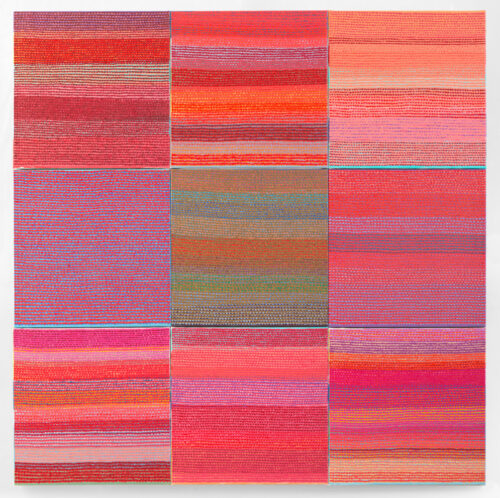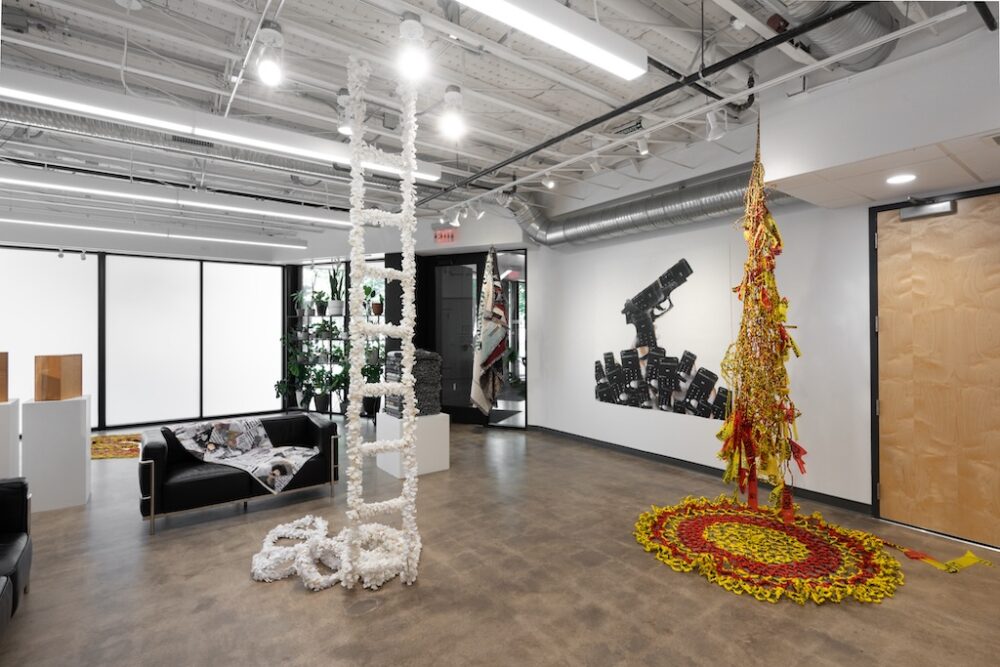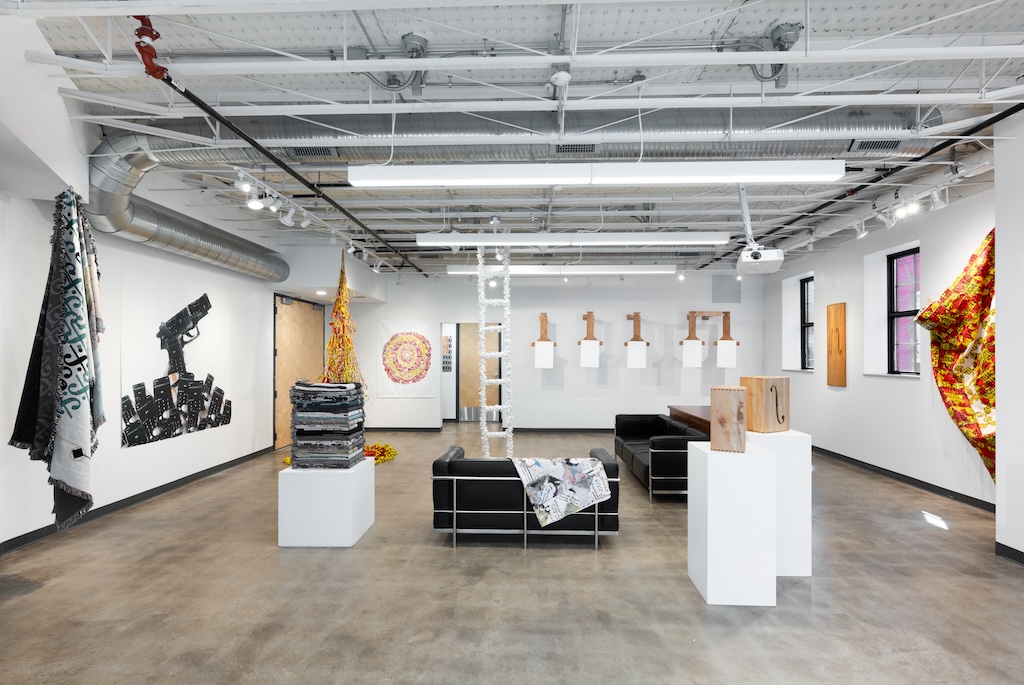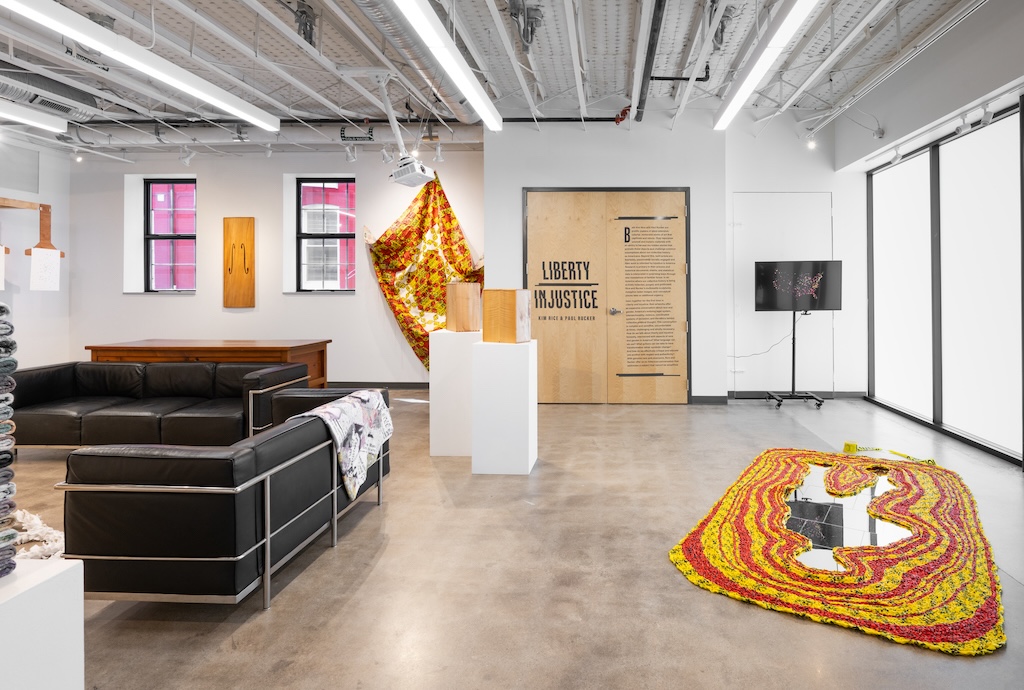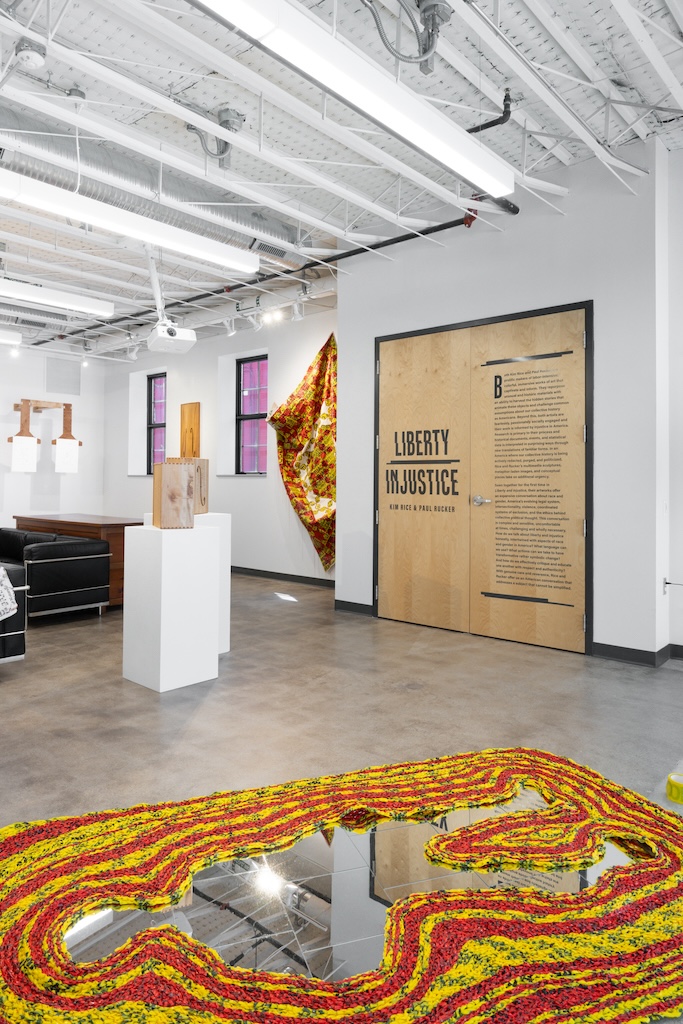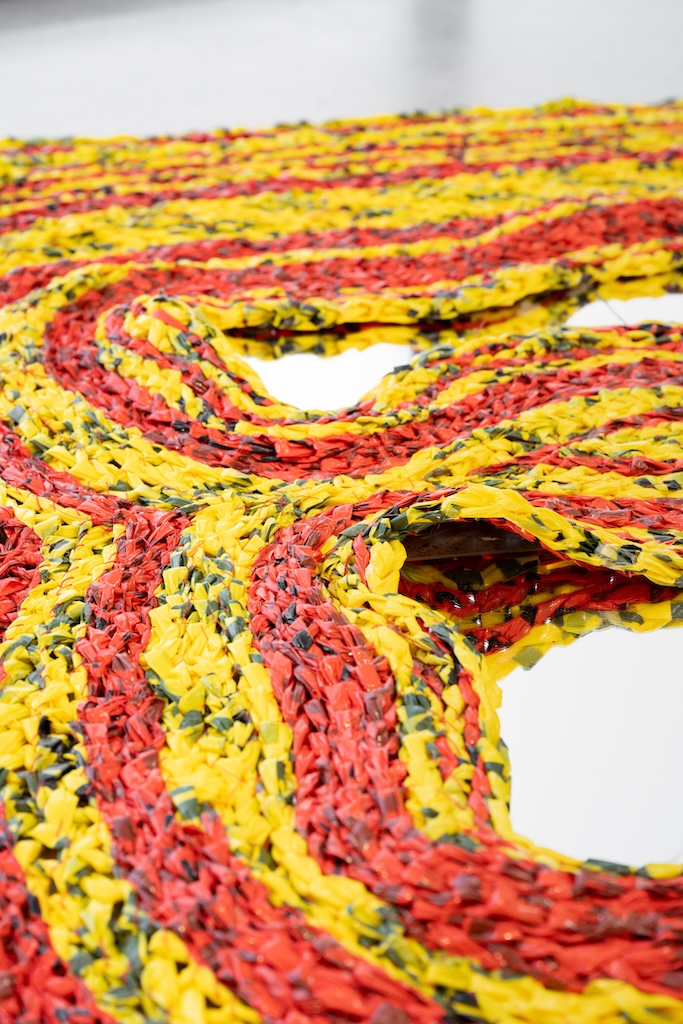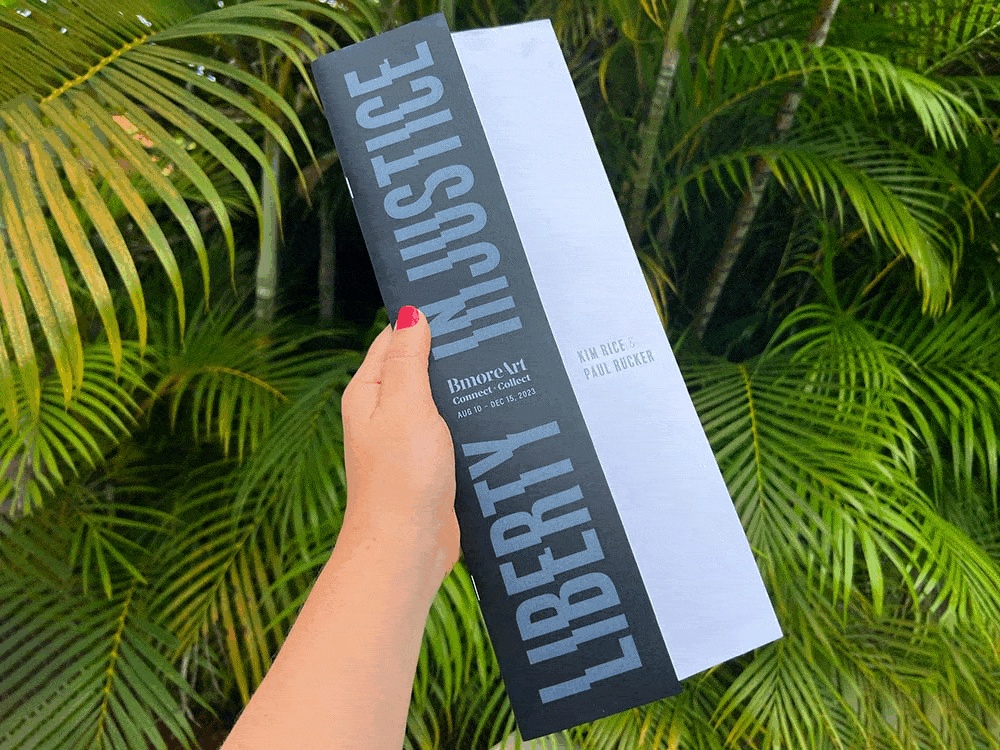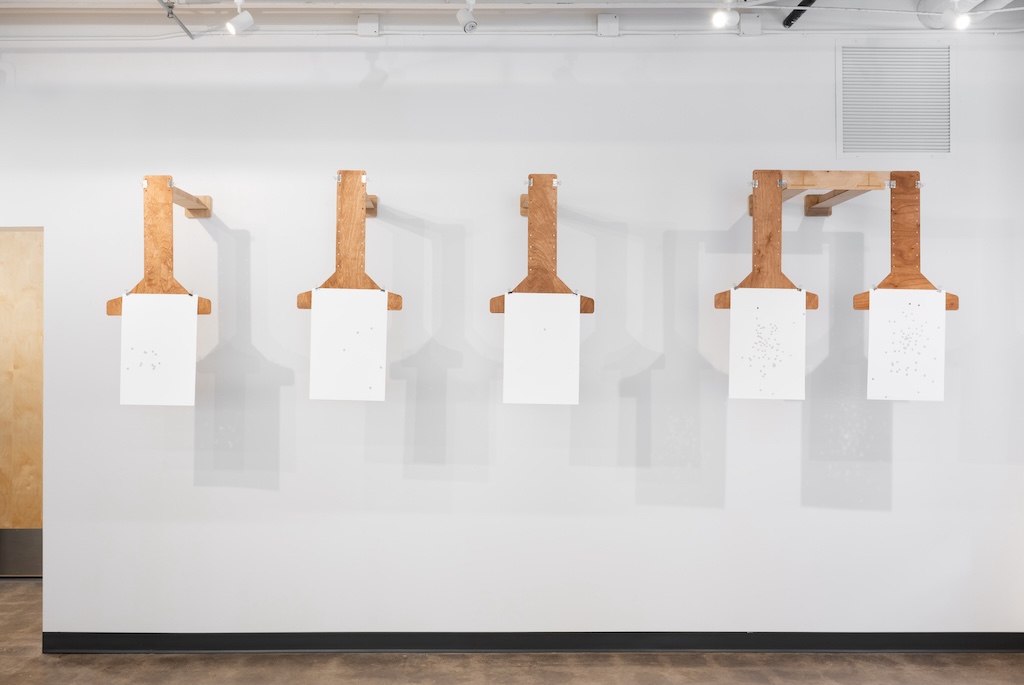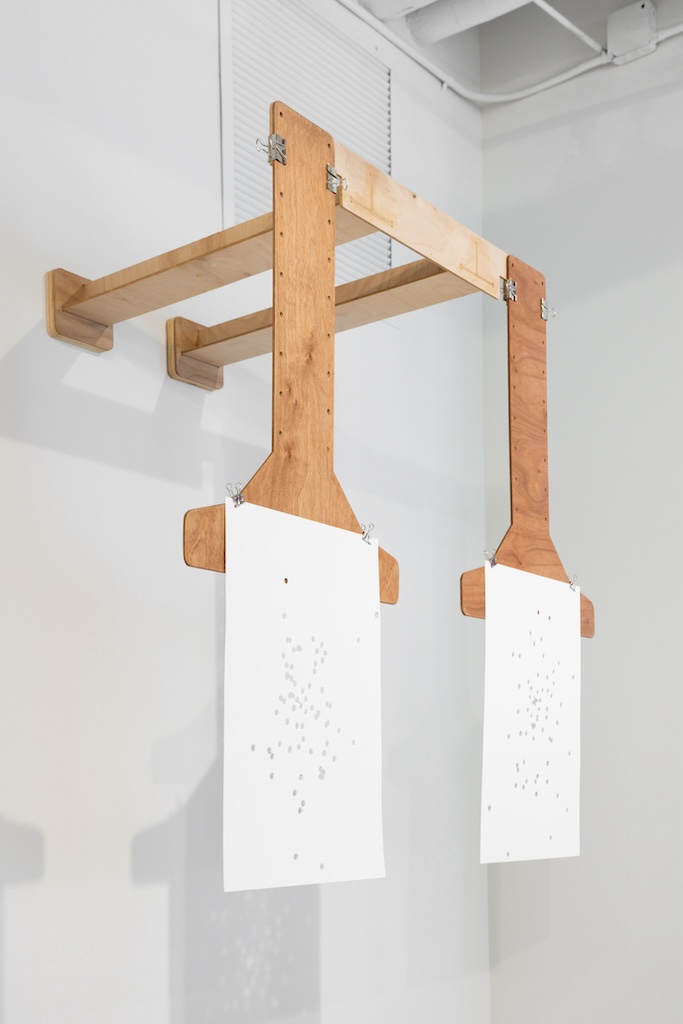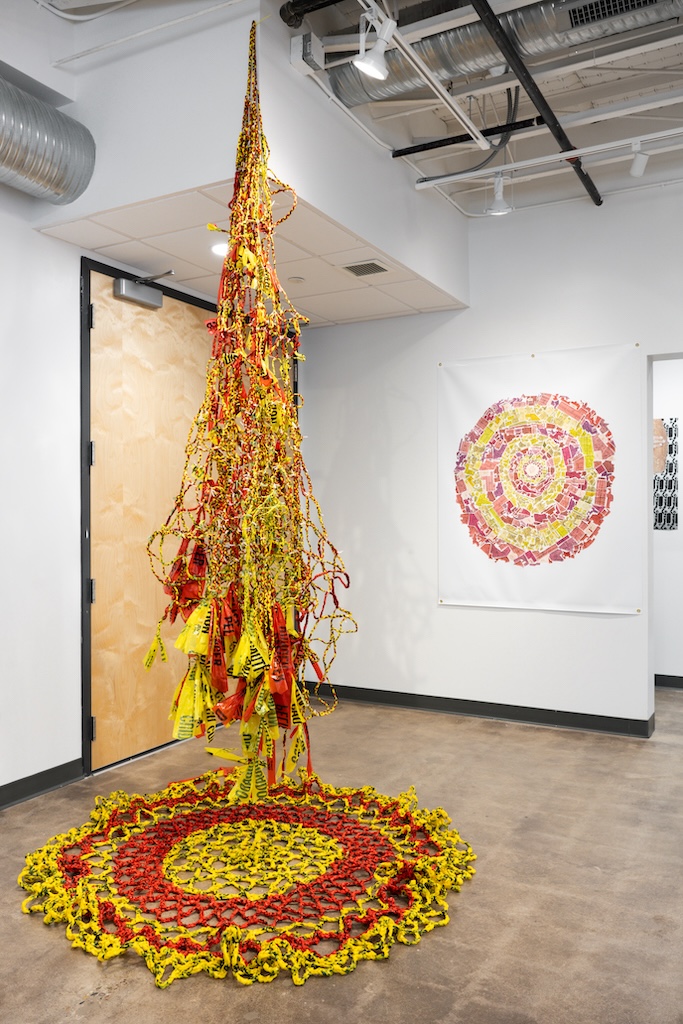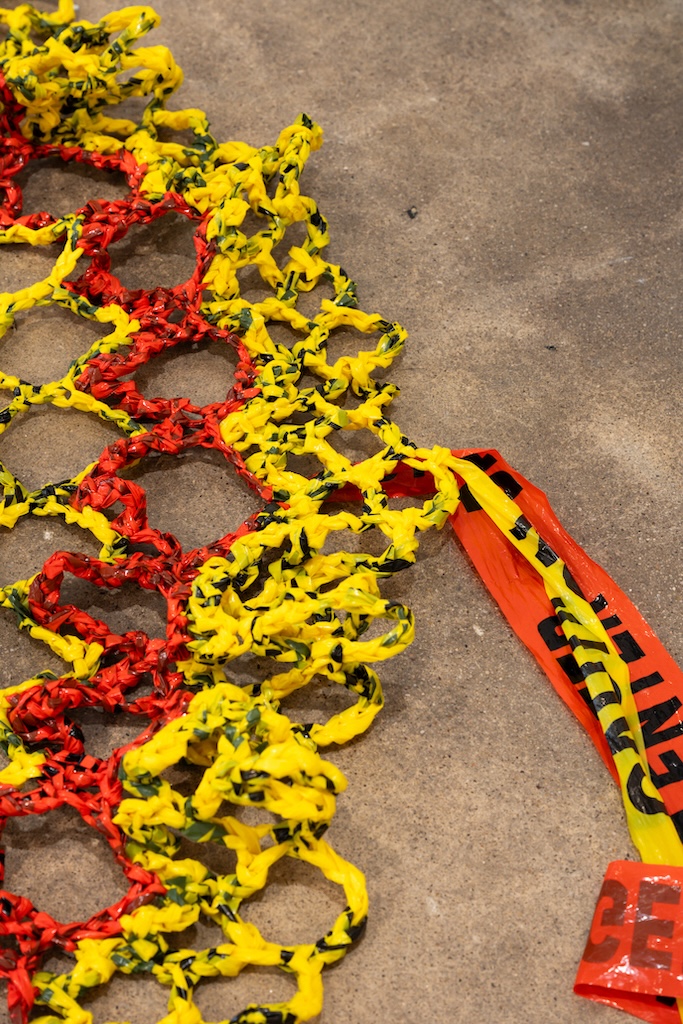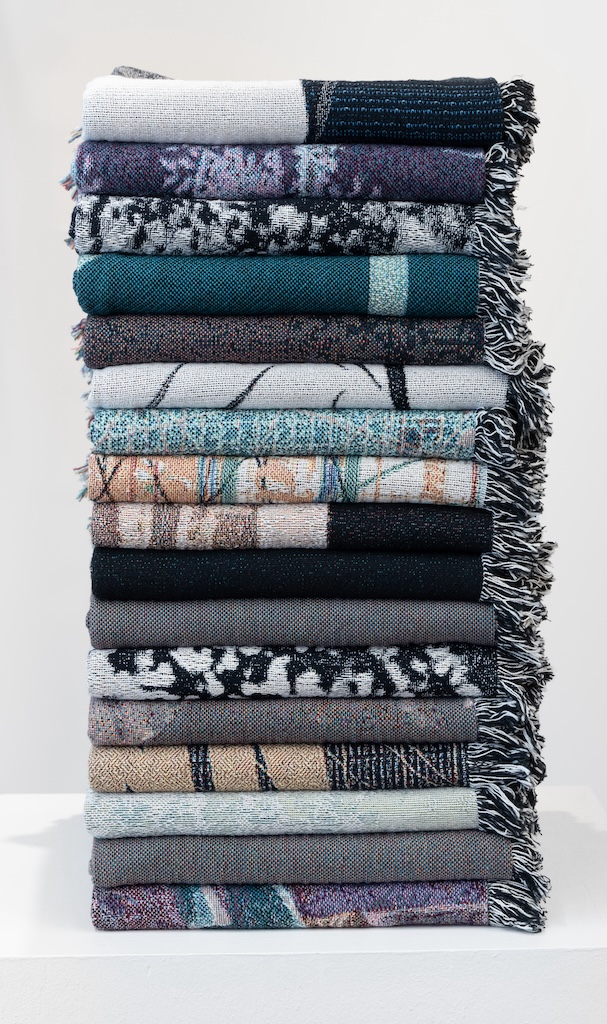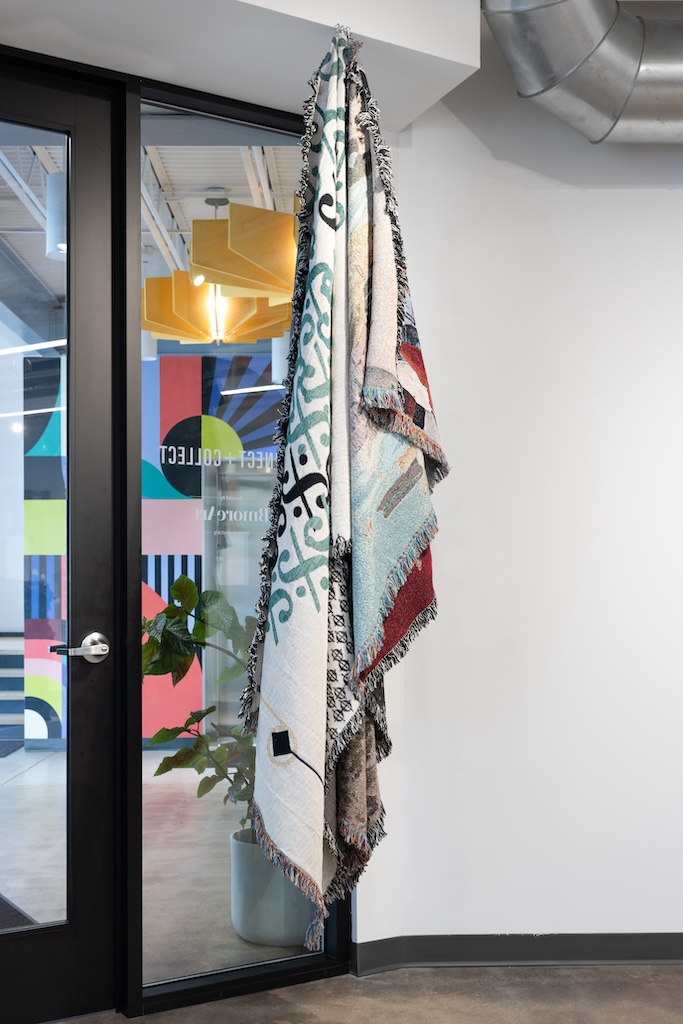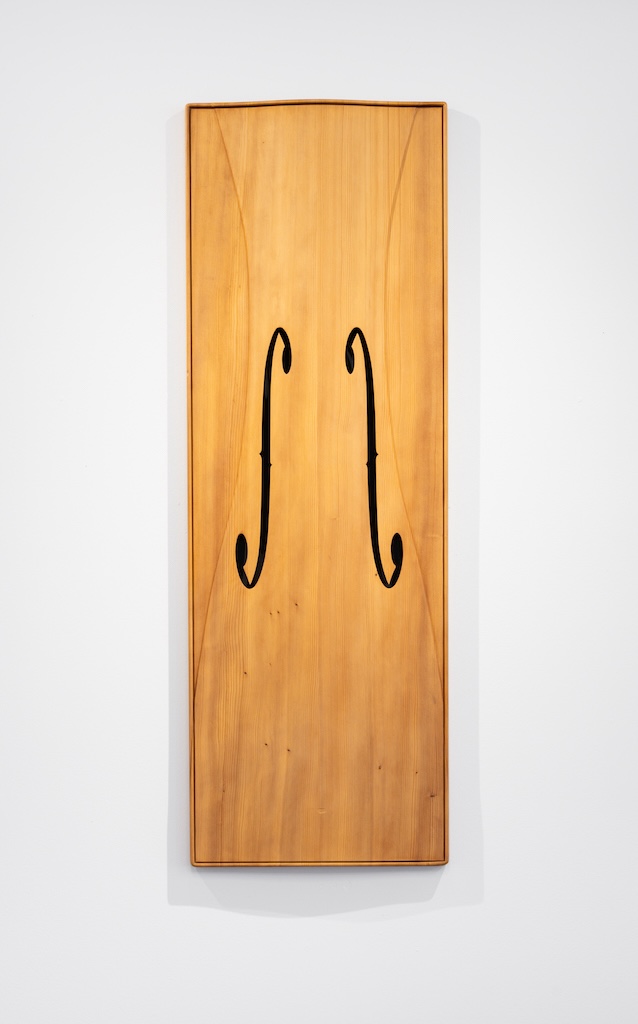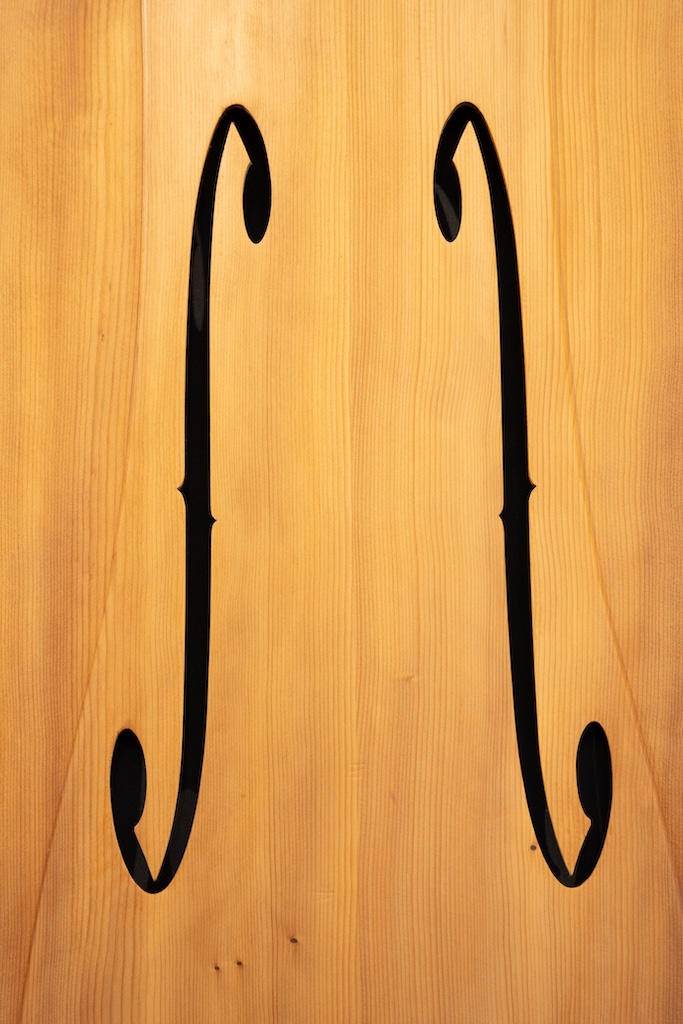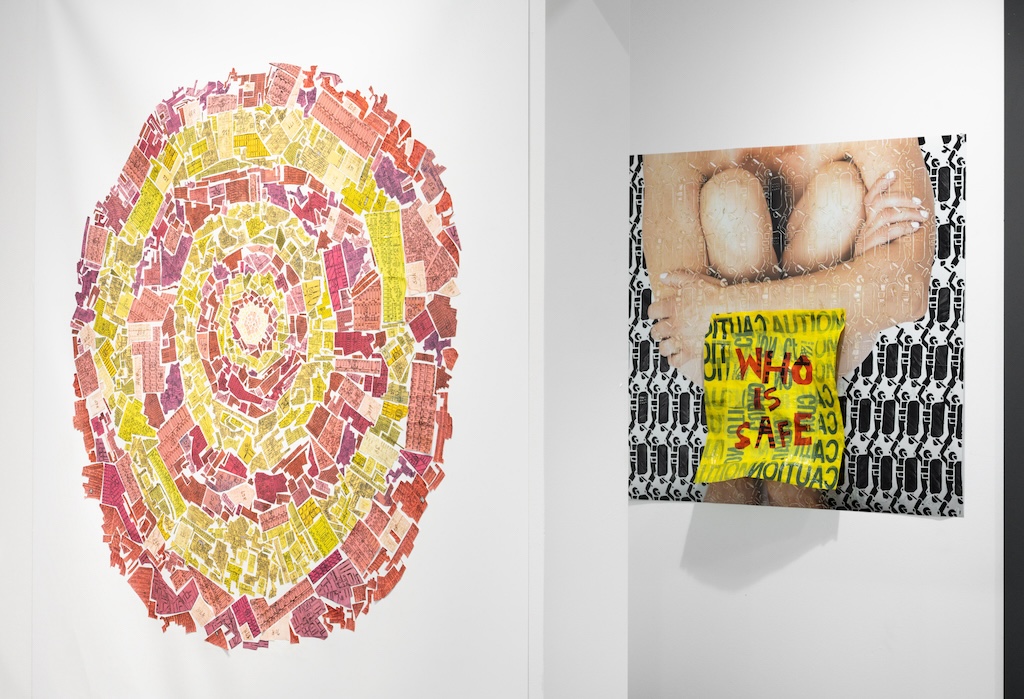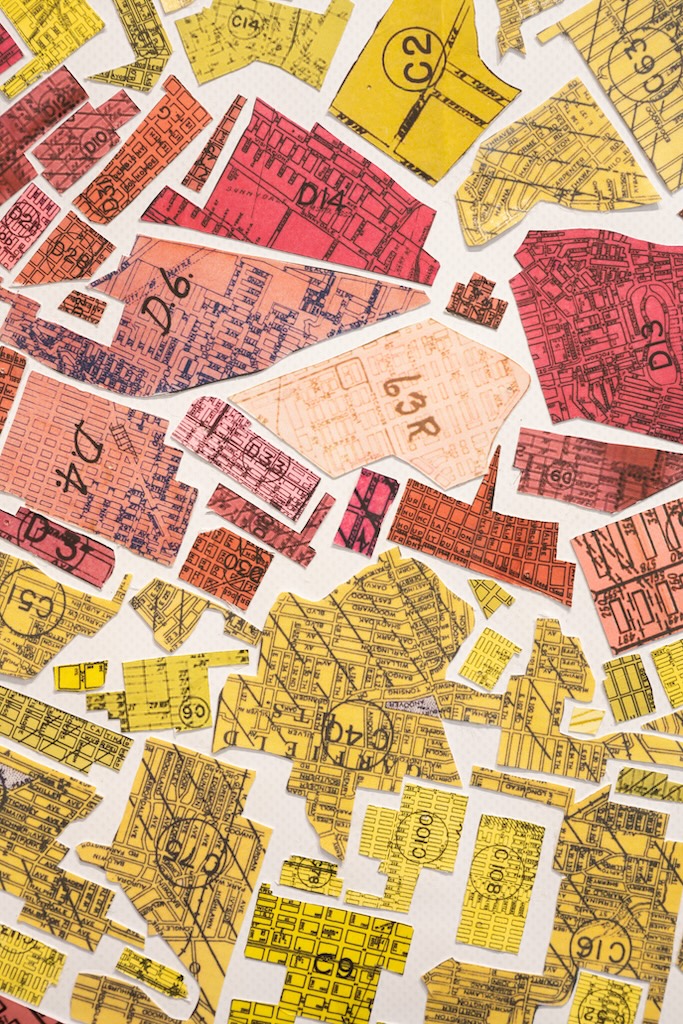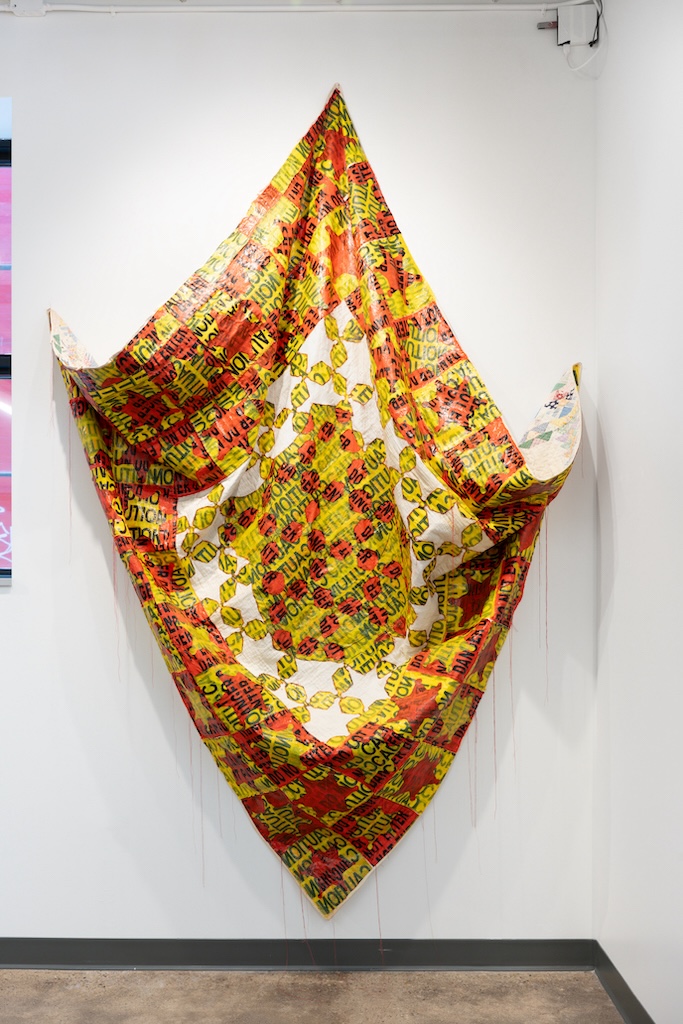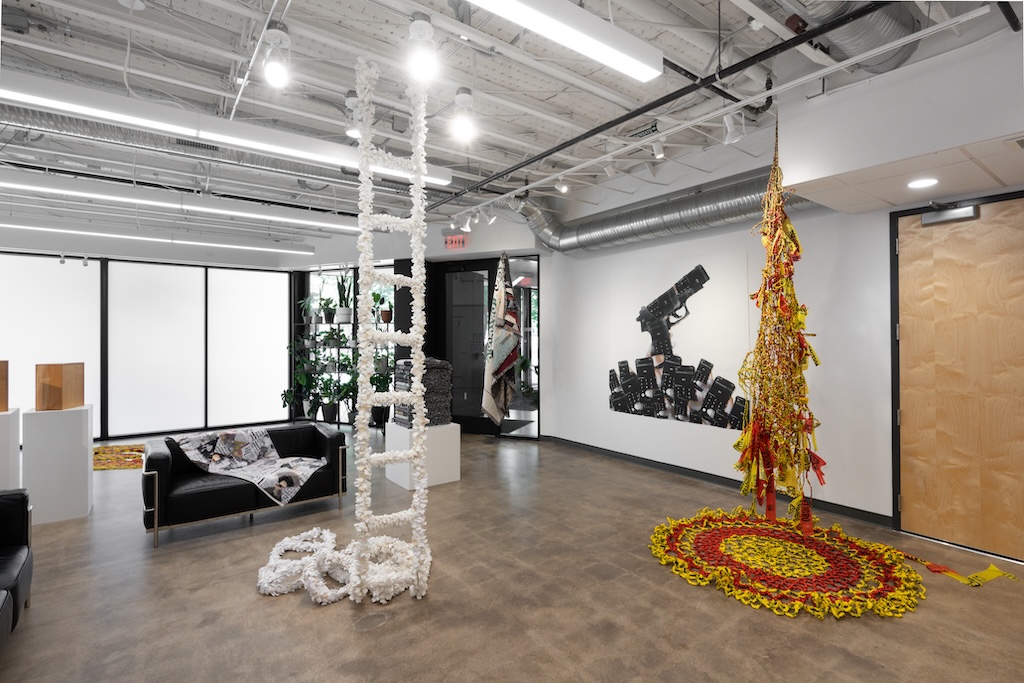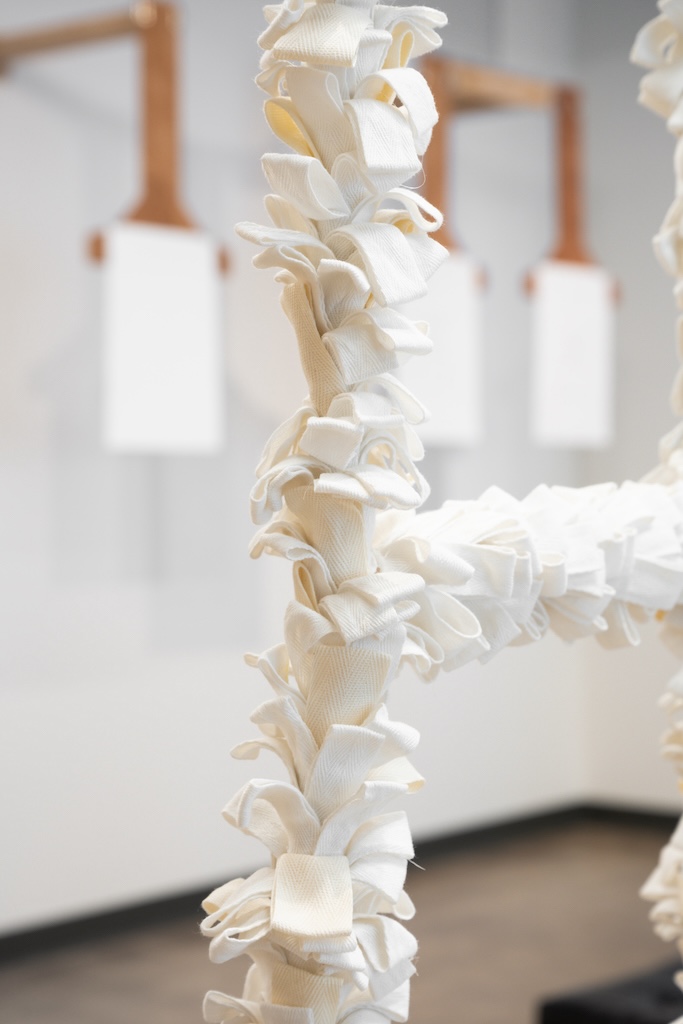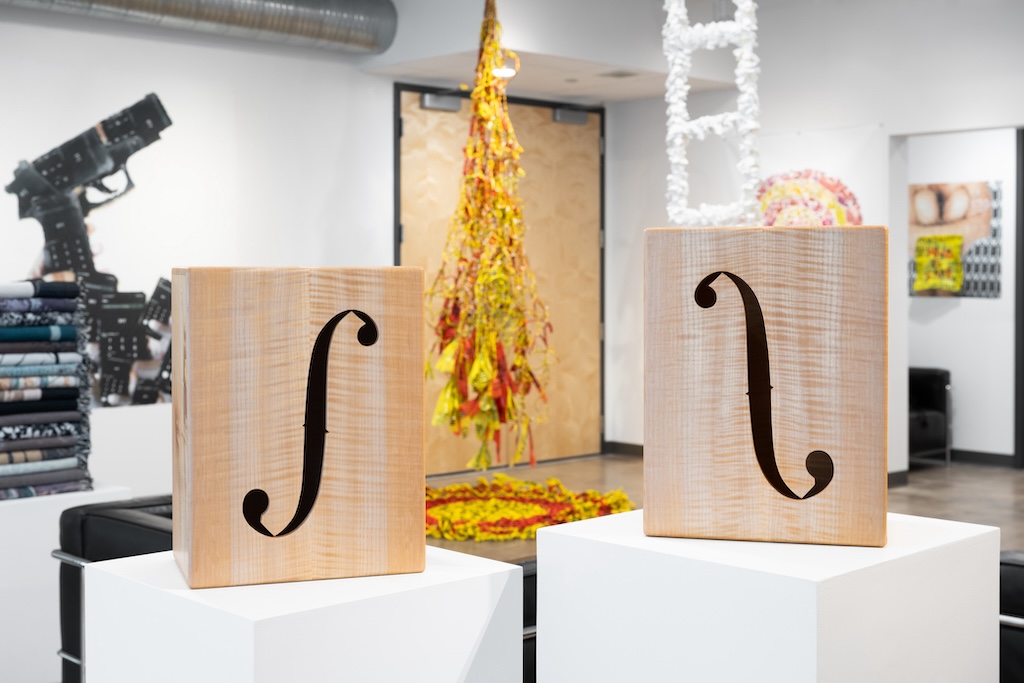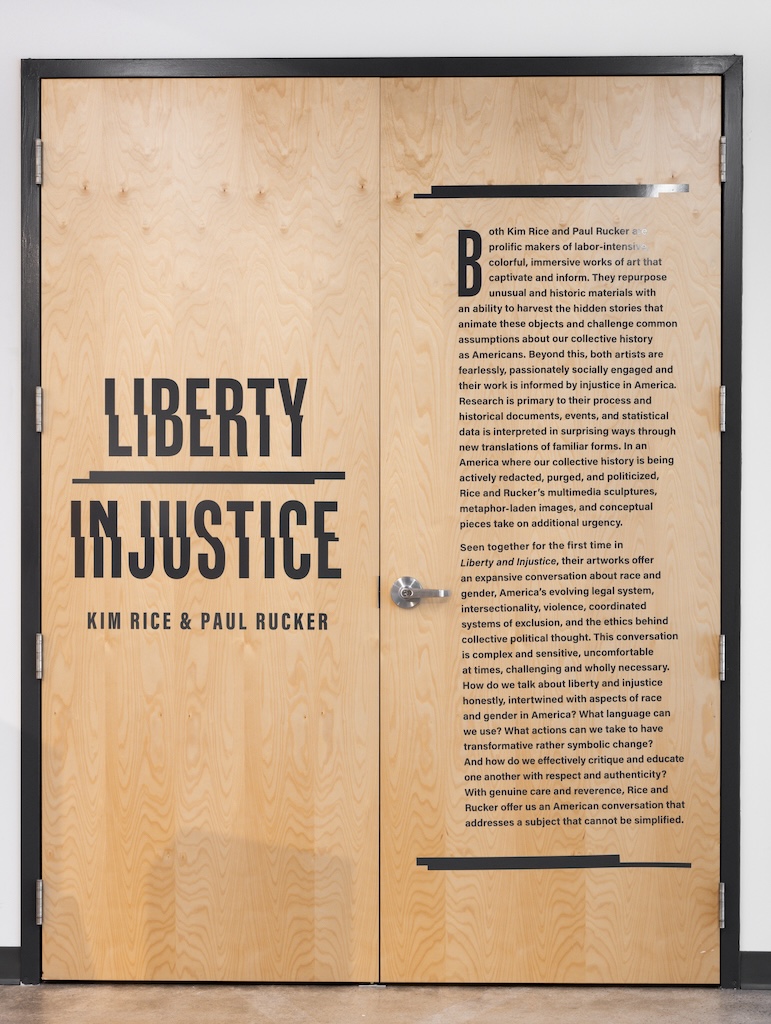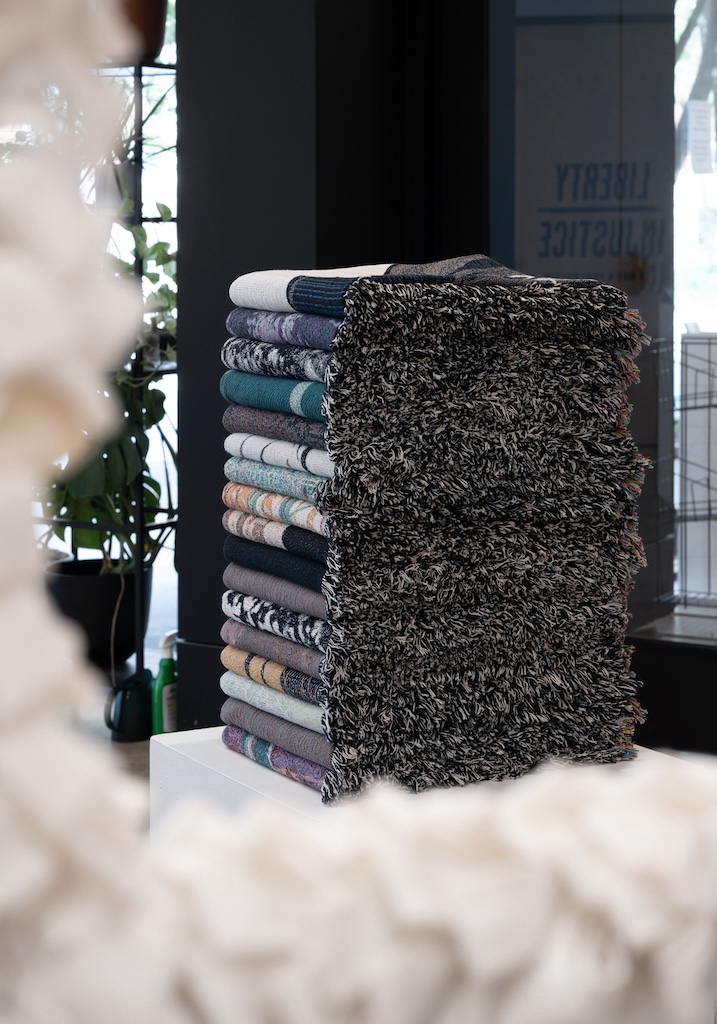In our series of intimate gallery exhibitions at Connect+Collect, the idea of conversation remains central. Over the past year we have paired two artists who harvest their art media from Baltimore City (Jordan Tierney and Adam Stab in Post-Consumption Benediction) and two artists who design architecture to envision fantastical worlds (TlaLoC and Alyssa Dennis in Arcadia Futura). What conversations could occur, our team wondered, if we paired the work of Kim Rice and Paul Rucker, two artists who use specific historical events and documents to offer an unflinching view of the reality of race in America? The result has been Liberty and Injustice, a compact but dense exhibit that examines gun violence, lynching, the role of police, inheritance, redlining, and white privilage.
Kim Rice and Paul Rucker are both prolific makers of labor-intensive, clever, immersive works of art that captivate and inform. Both repurpose unusual and historic materials with an ability to harvest the hidden stories that animate these objects and challenge common assumptions about our collective history as Americans. Beyond this, both artists are fearlessly, passionately socially engaged and their work is informed by the history of injustice in America. Research is primary to their process and historical documents, events, and statistical data is interpreted in surprising ways through new translations of familiar forms and materiality, which are surprisingly inviting–at least at first glance.
Seen together for the first time in Liberty and Injustice, their artworks offer an expansive conversation about race and gender, America’s evolving legal system, intersectionality, violence, coordinated systems of exclusion, and the ethics behind collective political thought. This conversation is complex and sensitive, uncomfortable at times, challenging and wholly necessary.
How do we talk about liberty and injustice honestly, intertwined with aspects of race and gender in America? What language can we use? What actions can we take to have transformative rather than symbolic change? And how do we effectively critique and educate one another with respect and authenticity? With genuine care and reverence, Rice and Rucker offer us an American conversation that addresses a subject that cannot be simplified.

